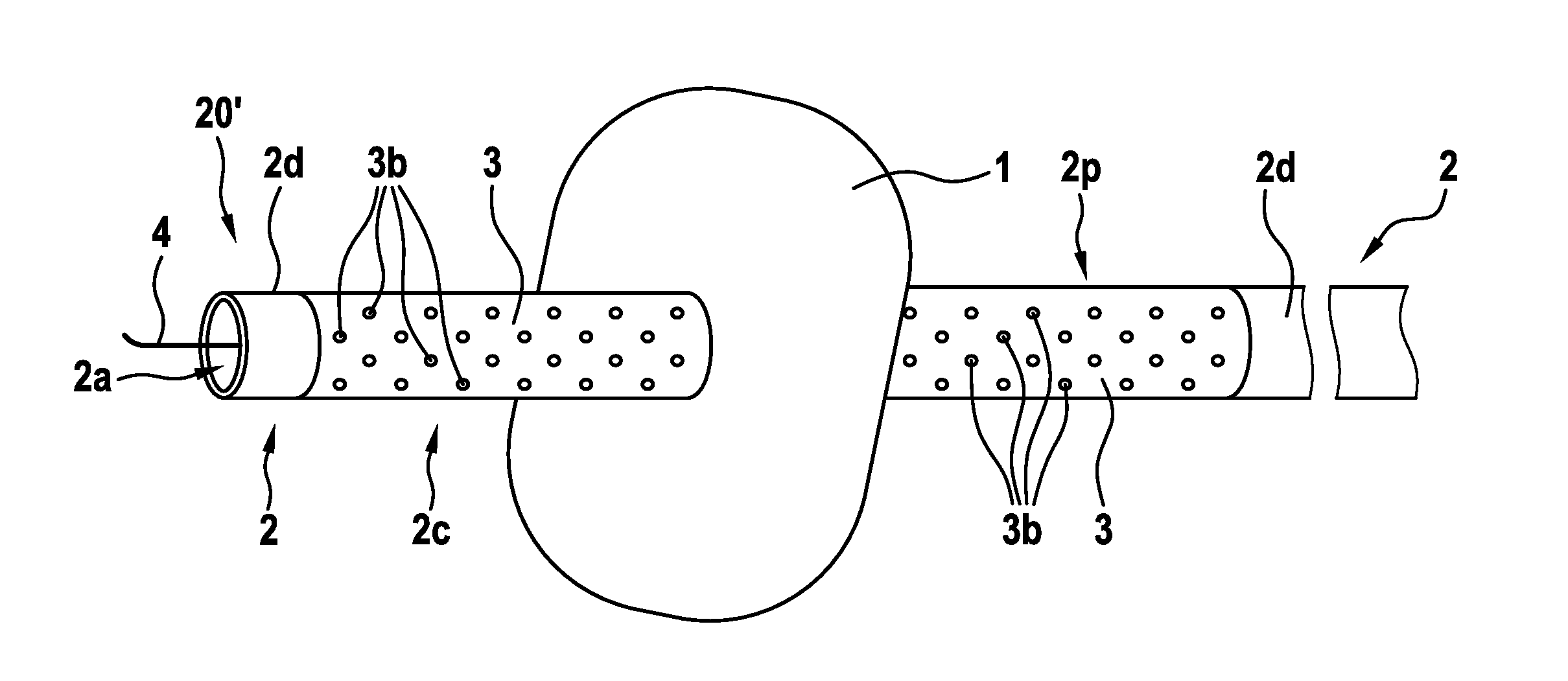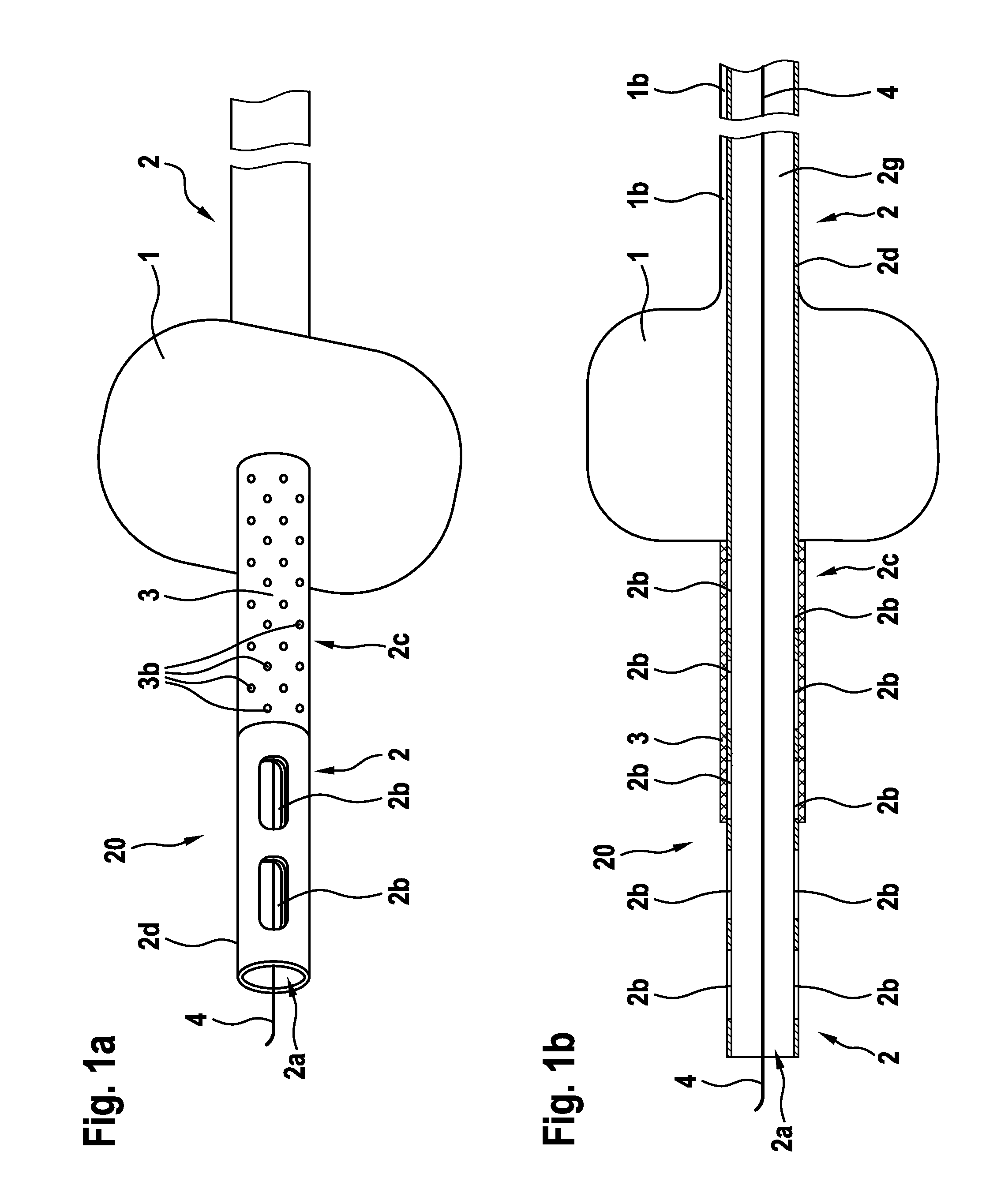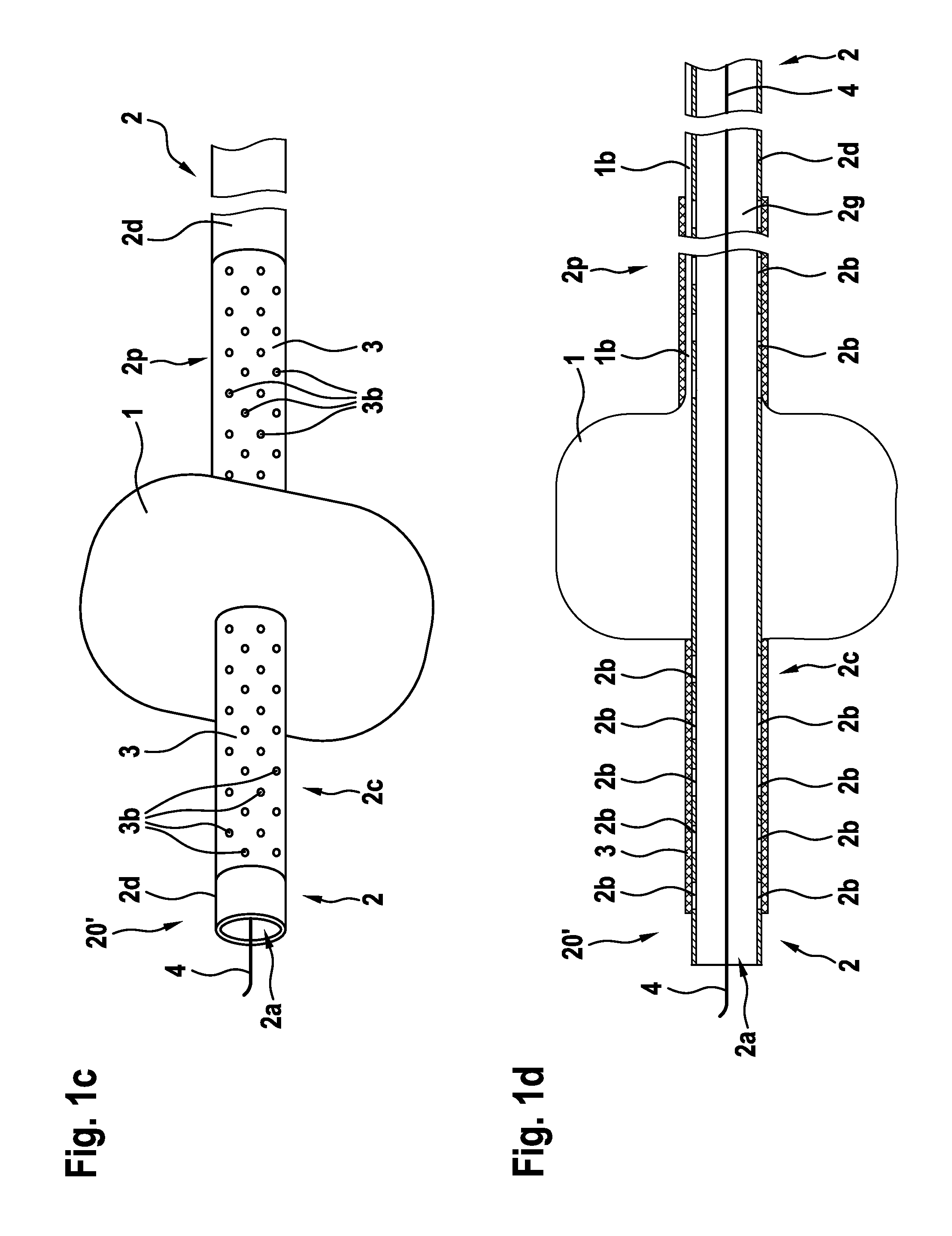Open-pore balloon catheter
a balloon catheter and open-pore technology, applied in the field of catheters, can solve the problem of affecting the and the wall portion facing toward the body is more difficult to press against the tissue, and achieves the effect of fast and reliable drainage of body fluids
- Summary
- Abstract
- Description
- Claims
- Application Information
AI Technical Summary
Benefits of technology
Problems solved by technology
Method used
Image
Examples
first embodiment
[0102]In FIGS. 1a and 1b, a catheter 20 of the invention, in the form of a balloon drain, is shown in a side view (FIG. 1a) and in a longitudinal sectional view (FIG. 1b).
[0103]The balloon drain is shown with an expansion element in the form of an expanding balloon 1, the cross section of which is enlarged in order to firmly hold the distal end of the catheter in a body cavity. The balloon 1 is seated annularly on a fluid-carrying element 2, which has a drainage tube 2d with an inner lumen 2g and extends from the proximal end, which emerges from the body and is shown on the right in the drawings, in the direction of the distal end of the catheter, which is to be located in the interior of the body and is shown on the left in the drawings. The drawings essentially show only the distal end portion of the catheter; the length of the drainage tube 2d is shown shorter than it actually is.
[0104]Distally of the balloon 1, the drainage tube 2d is circularly sheathed by a wall portion 2c of ...
second embodiment
[0107]In FIGS. 1c and 1d, a catheter 20′ of the invention in the form of a balloon drain is shown in a side view (FIG. 1c) and in a longitudinal sectional view (FIG. 1d).
[0108]The balloon drain is shown with an expansion element in the form of an expanded balloon 1, whose cross section is enlarged in order to firmly hold the distal catheter end in a body cavity. The balloon 1 is seated annularly on a fluid-carrying element 2, which has a drainage tube 2d with an inner lumen 2g and extends from the proximal end of the catheter, which protrudes from the body and is shown on the right in the drawing, in the direction of the distal end, which is to be located in the interior of the body and is shown on the left in the drawings. The drawings essentially show only the distal end portion of the catheter; the length of the drainage tube 2d is shown shorter than it actually is.
[0109]Distally of the balloon 1, the drainage tube 2d is sheathed circularly by a first wall portion 2c of an open-p...
third embodiment
[0112]In FIGS. 1e and 1f, a catheter 20″of the invention is shown in the form of a balloon drain, in a side view (FIG. 1e) and in a longitudinal sectional view (FIG. 1f).
[0113]The balloon drain is shown with an expansion element in the form of an expanded balloon 1, whose cross section is enlarged in order to firmly hold the distal catheter end in a body cavity. The balloon 1 is seated annularly on a fluid-carrying element 2, which has a drainage tube 2d with an inner lumen 2g that extends from the proximal end of the catheter that protrudes from the body and is shown on the right in the drawing, in the direction of the distal end, to be located in the interior of the body and shown on the left in the drawings. The drawings essentially show only the distal end portion of the catheter; the length of the drainage tube is shown shorter than it actually is.
[0114]Proximally of the balloon 1, the drainage tube 2d is circularly sheathed by a wall portion 2p of an open-pore material 3, in t...
PUM
 Login to View More
Login to View More Abstract
Description
Claims
Application Information
 Login to View More
Login to View More - R&D
- Intellectual Property
- Life Sciences
- Materials
- Tech Scout
- Unparalleled Data Quality
- Higher Quality Content
- 60% Fewer Hallucinations
Browse by: Latest US Patents, China's latest patents, Technical Efficacy Thesaurus, Application Domain, Technology Topic, Popular Technical Reports.
© 2025 PatSnap. All rights reserved.Legal|Privacy policy|Modern Slavery Act Transparency Statement|Sitemap|About US| Contact US: help@patsnap.com



